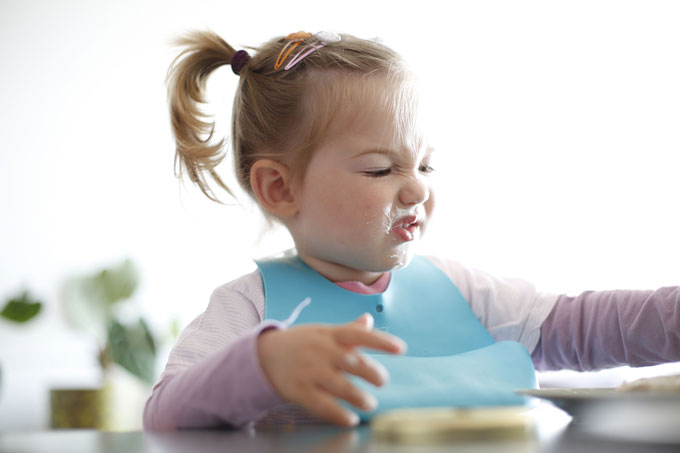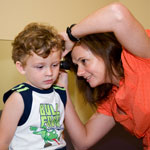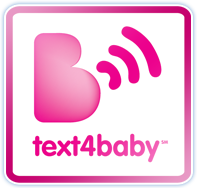 Leaving pureed baby foods and offering solids after 9 months can be one of the most fun parts of feeding children. Some children have trouble making the transition. Does your older infant (9 months and up) have these problems?
Leaving pureed baby foods and offering solids after 9 months can be one of the most fun parts of feeding children. Some children have trouble making the transition. Does your older infant (9 months and up) have these problems?
- Eating solids?
- Refusing the spoon?
- Immediately spitting out food?
If your child is having these problems try some of the suggestions below. If you are still having trouble with your child eating solids discuss your concerns with your doctor at their 12 month checkup.
- Promote Acceptance of Spoon
- Offer first an empty spoon.
- As his comfort and acceptance gradually increase, consider using the spoon to present a preferred food (applesauce, yogurt.)
- Use the spoon to stir or “draw with” a puree on his tray or the table; encourage him to imitate.
- Do not present a bite right away; let him get more comfortable with the puree. He may use his fingers or spoon to interact with the puree and eventually bring them to his mouth.
- As he becomes more comfortable with this activity, he may begin to accept spooned purees to his lips.
- Present the spoon to his lips and keep it there until he opens his mouth for it.
- Remain calm and use a soothing voice; limit verbal cues and use brief statements like “bite” or “more bananas.” Don’t use questions like “do you want it?” or “Can you do it?”
- Give him lost of praise for taking the bite, opening his mouth etc
- Keep meal times fun!
- Allow him to be messy with food as this is helpful for his sensory development and to prevent oral aversion.
- Consider limiting the cleaning of his face and avoiding “scraping” his lips with the spoon to clean off excess food.
Have Fun at the Table
- Allow him to get messy during mealtimes. Avoid frequent cleaning of face and hands as this can be an aversive stimulus to children with feeding difficulties
- Attempt to avoid distraction during mealtime – however instead of the use of a toy as a distracter give him an eating utensil to play with such as a spoon or empty cup.
- While a meal is being prepared one time a day allow him to sit in his highchair and participate in messy play or play with food. For example initially present him with puffs, crackers, or Cheerios to manipulate himself. Your goal is to move him toward tolerating this food item on his cheeks, nose, lips, and tongue.
- After he is comfortable with playing with food on his highchair, allow him to get messy with slippery foods such as applesauce, cubed vegetables or fruit. Once again your goal is to work toward him tolerating this item on his fingers, hand, arm, head, cheek, nose, lips and tongue.
- Use lots of praise when he takes a bite or touches a new food or puts it to his mouth. Try to not give attention for those behaviors we don’t want continued like turning away, pushing food away, etc.
- Initiate weaning from bottle feeds; offer sippy cup with milk prior to offering the bottle. Limit the bottle to nighttime feeding and wean as tolerated.
- Place all food in a bowl rather than in baby food jar to increase acceptance of table food.
- As part of the transition process, when he tolerates being fed from a bowl, begin to blend table food to his preferred consistency.
- Offer 2-3 snacks and 3 meals a day every 2-3 hours. During meal times offer drink (water or milk) and food item rather than milk alone. Limit the meal to 30 minutes
Click here for a one day sample menu for an older infant.
The information and content on our website should not be used as a substitute for medical treatment or advice from your doctor.




